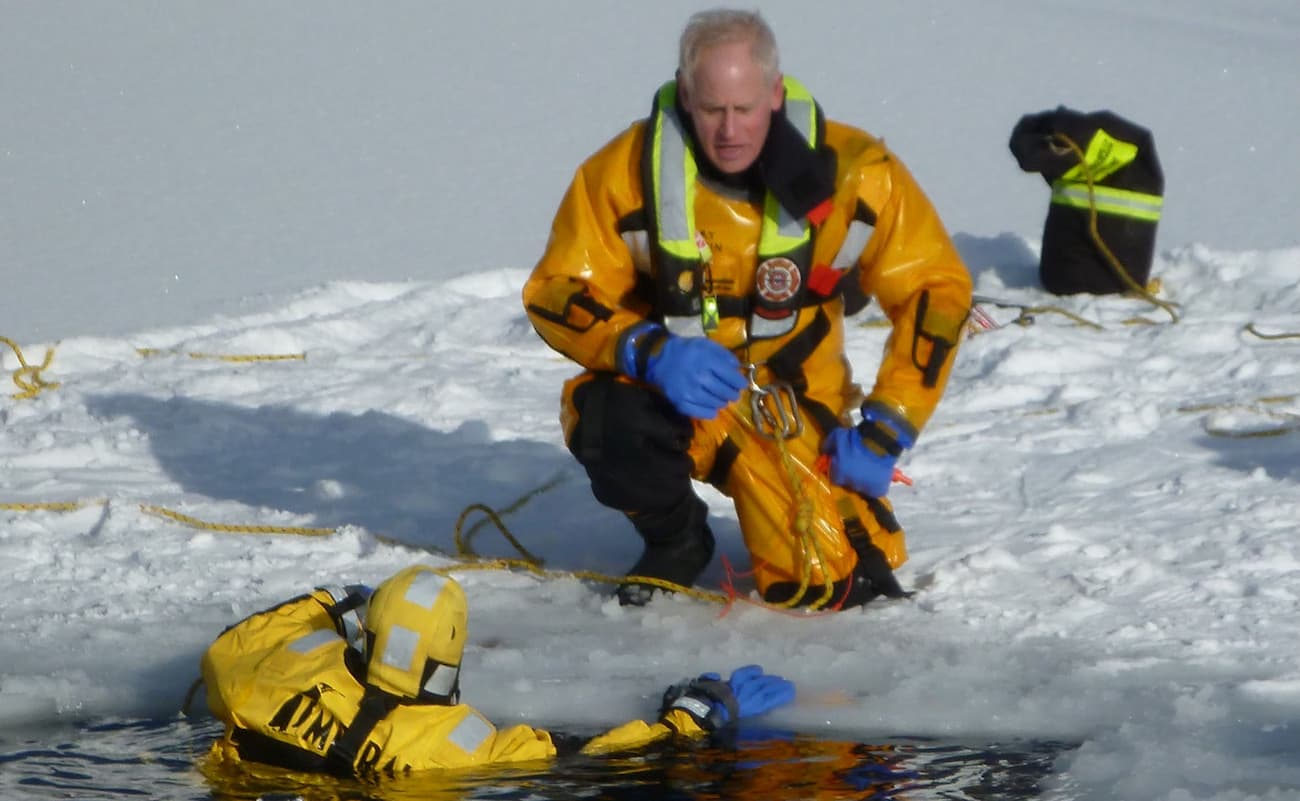PPE for Ice Rescue Incidents
 Training & Equipment
Training & Equipment
First Responders must be properly trained and equipped in order to safely and effectively respond to ice rescue and recovery incidents.
PPE (Personal Protective Equipment) must be readily available and in good condition for both shore-based and Rescue Swimmer personnel.
Shore-Based PPE
Shore-based rescue personnel within 10’ of the water should wear an appropriately-sized Personal Flotation Device (PFD).
This includes typical lifejackets, float coats, or anti-exposure coveralls. U.S.C.G. approved float coats and anti-exposure coveralls are designed to keep the wearer warm while on land; and when in the water, they provide buoyancy and extended hypothermia protection.
Rescue Swimmer PPE
Rescue Swimmers should wear an approved Ice Rescue Suit.
An Ice Rescue Suit has reinforced knee and elbow pads, integral gloves and boots, and has a safety tether secured around the wearer’s chest or waist. Tether lines should be attached to the front, not the rear, of the safety tether.
Ice Rescue suits are inherently buoyant (approximately 30 lbs. of buoyancy) so as long as the Rescue Swimmer is tethered to shore, a lifejacket is not required to be worn over the ice rescue suit. In fact, doing so, just makes it overly cumbersome.
In addition to the ice rescue suit, the Rescue Swimmer should wear a helmet and should carry a set of ice picks with a retractable pin, as well as a pea-less plastic whistle.

